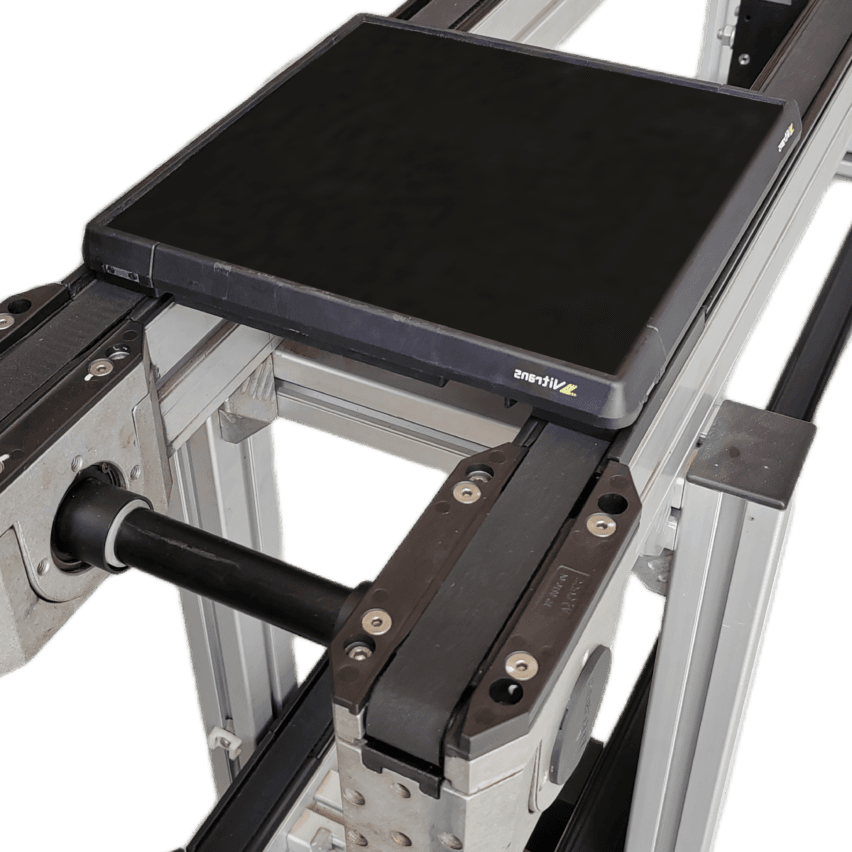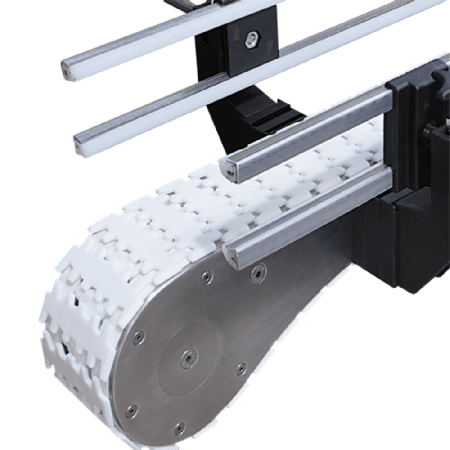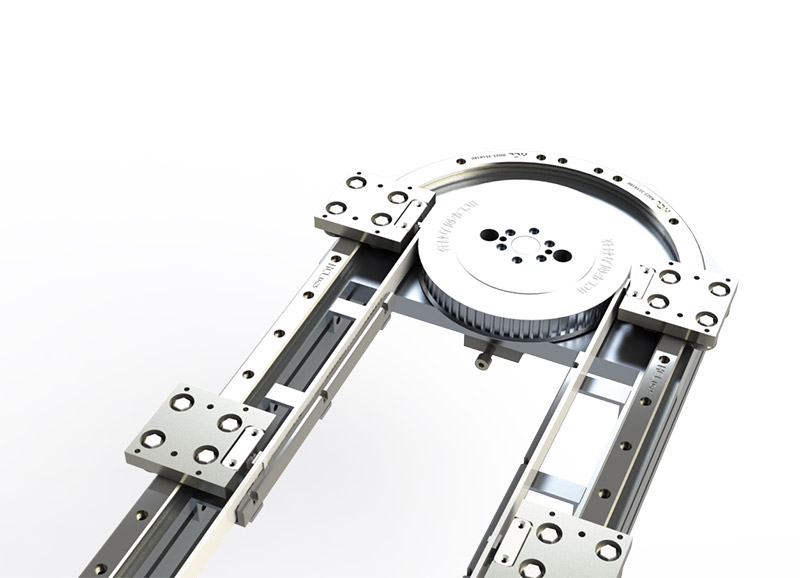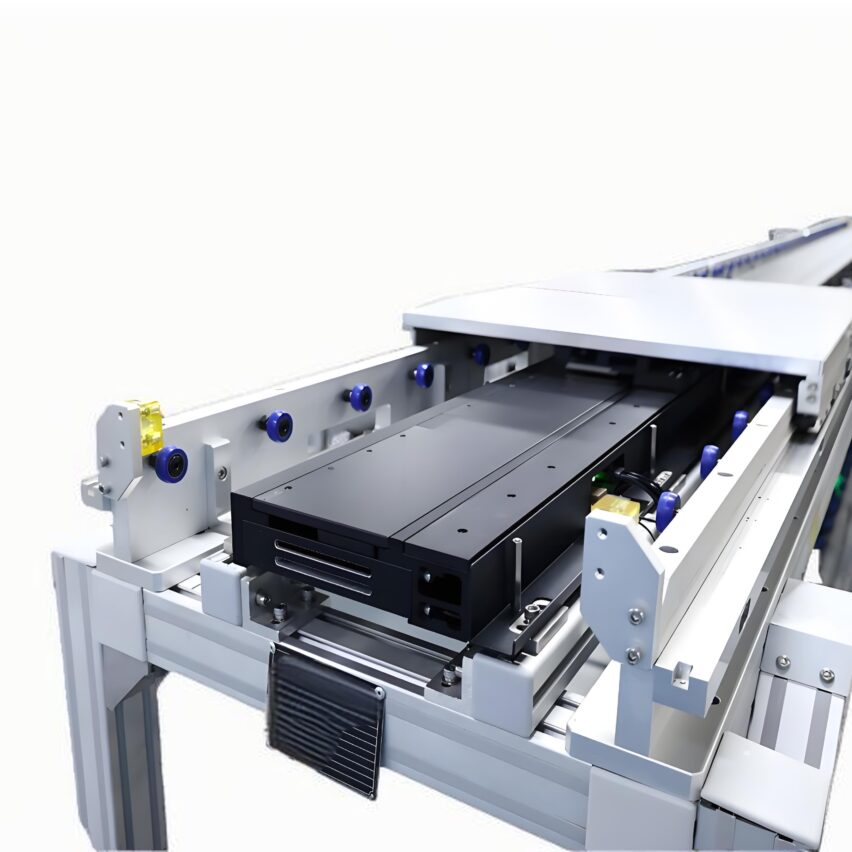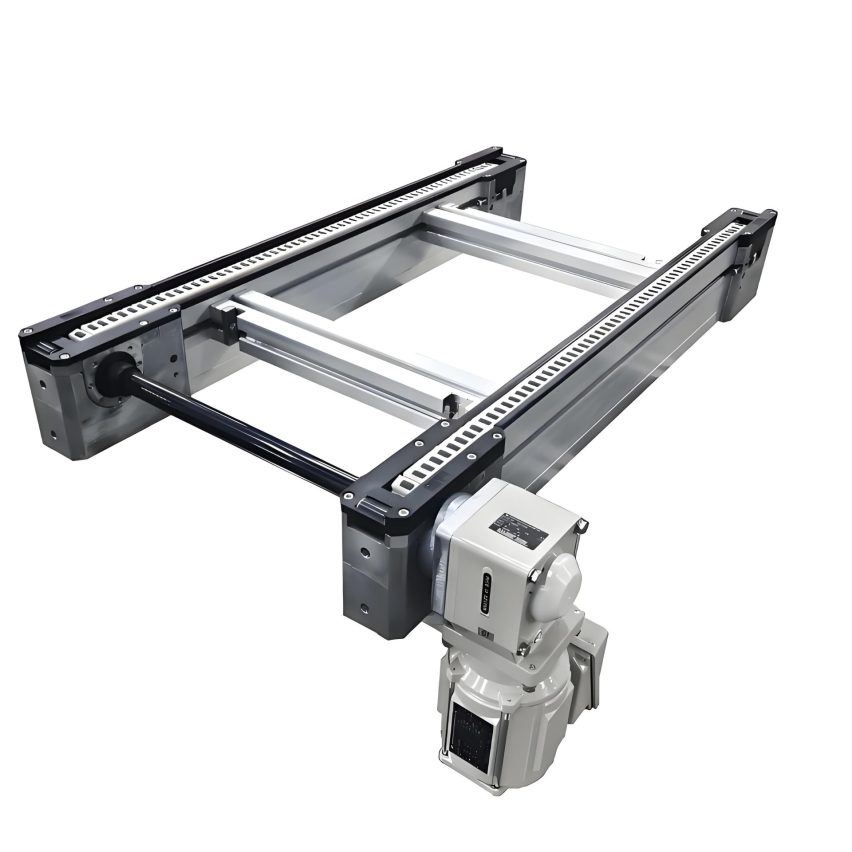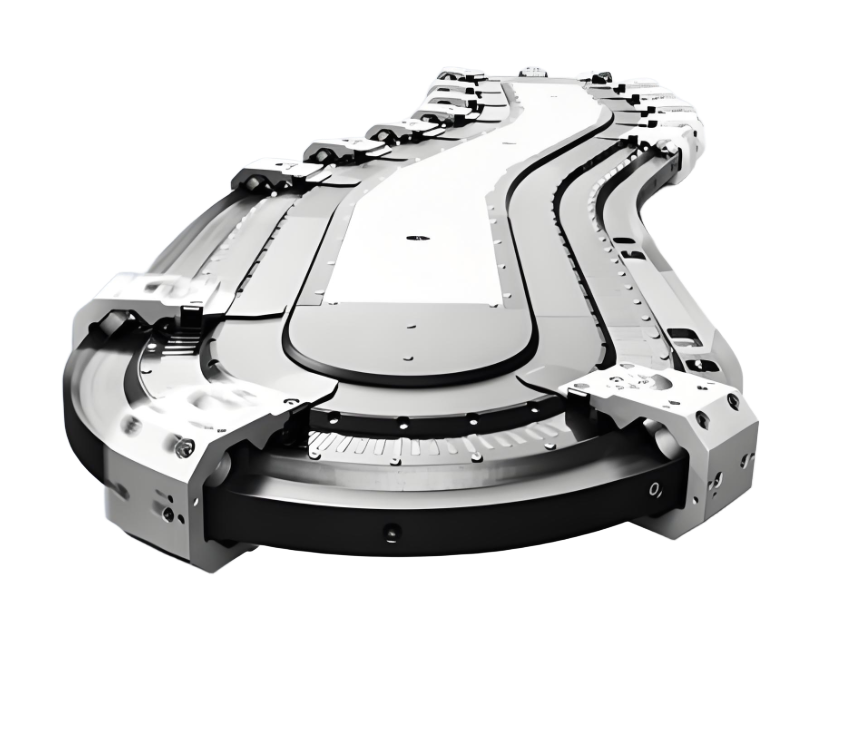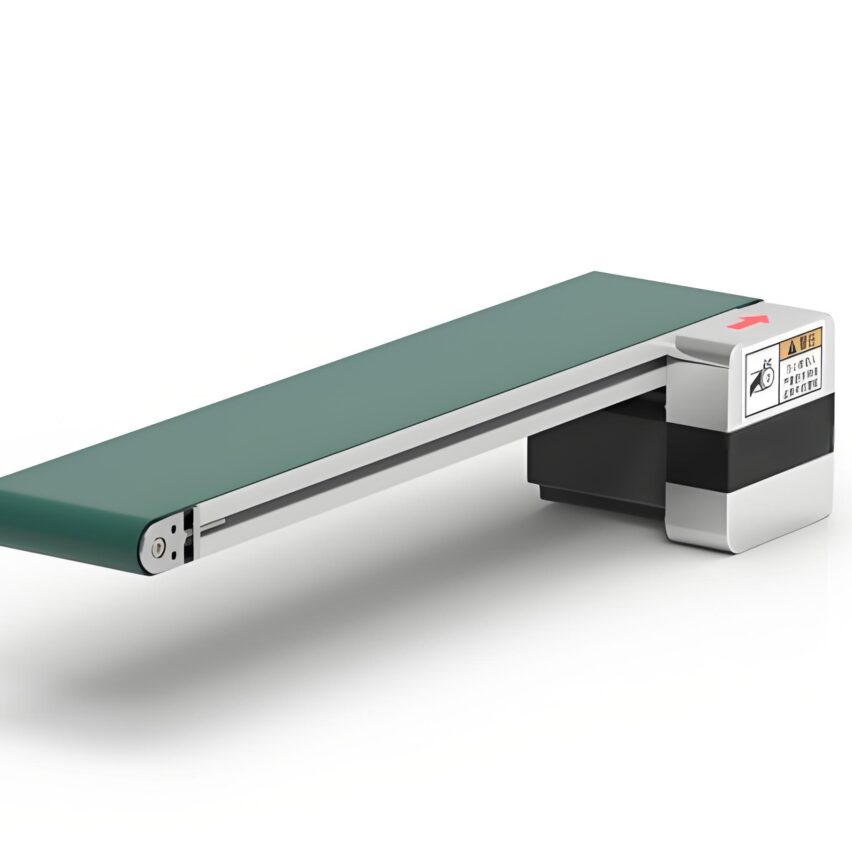I. Principle of space reuse: engineering logic of vertical layout
The core breakthrough of the double-layer speed chain is"Vertical Space Reuse Technology". Its operating mechanism achieves a leap in efficiency through a three-tier design:
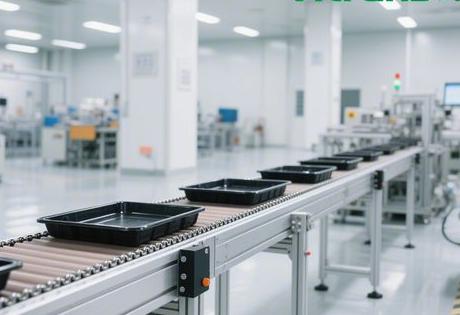
- differential drivePallet speed = chain speed x (1+D/d), where D is the diameter of the roller and d is the diameter of the chain roller. 2.5 times the speed of the chain has a D/d ratio of 1.5, which increases the pallet movement speed to 2.5 times that of the chain.
- Dynamic Reflow Architecture: After the upper level has finished conveying, the empty pallet passes through thejacking and panning machine(Cylinder Drive + Linear Guide) Automatically transfer to the lower return line, reducing the 40% flat surface area.
- Accumulation control technologyWork stations are equipped with photoelectric sensors and blocking cylinder linkage, response time ≤ 0.5 seconds, to achieve millimetre-level stopping accuracy, allowing local pause without interrupting the whole line of operation.
personal viewpoint: The current return buffer design is still a technical shortcoming. Ningbo Kai Feng 2024 patentedPolyurethane cushioning modulesAlthough it is able to absorb 60% shock energy, it needs to be transferred to a futureHydraulic Damping Adaptive SystemUpgrade - Dynamically adjusting the damping force through real-time monitoring of the falling speed can further reduce the wear and tear on the 32%'s mechanism.
II. Structural innovation: a balancing act between modularity and heavy loads
1. Modular architectural innovation
- Pre-set profile systemAdopt 118×100mm standard aluminium profile guide rail, support 300/600/900mm module fast splicing, splicing error <0.1mm/m
- Driver Compatible DesignMotor interface: Siemens/Mitsubishi multi-brand flange, control box integrated Profinet/EtherCAT protocol, plug-and-play.
- Quick release link technologyPatented snap link changeover time compressed from 45 minutes to 8 minutes, dramatically reducing lost downtime.
2. Heavy-duty performance breakthrough
| take | Chain material | Carrier Strengthening Programme | ultimate load |
|---|---|---|---|
| Car Battery Pack | Carbon steel + ball bearings | Double sprocket synchronised drive | 1000kg |
| Medical equipment | 316L stainless steel | Reinforced Tension Screw | 500kg |
| electronic product | Engineering Plastic Chain | Aluminium profile cladding rails | 100kg |
Note: Heavy-duty scenarios need to be equipped with transition rails (wear resistance is 300% higher than aluminium rails) to prevent chain deformation.
III. Industry application matrix: pain point cracking programme
electronics manufacturing(Mobile phone/laptop assembly)
- Static control: Tray-integrated conductive wheels (surface resistance ≤ 10⁶Ω) to prevent chip breakdowns
- Quick changeover: Modular tooling boards for 2-hour product model changeover, supporting 12 models in daily production
- space compression: Output per unit area increased by 2.1 times after the adoption of a double-layer structure in a factory in Shenzhen.
Automotive heavy-duty assembly
- Transfers across levels: Top lift panning machine and AGV synergise to achieve cross-floor delivery of engine block → battery packs
- Synchronisation accuracyMitsubishi PLC control multi-segment independent drive, 20 metres segmentation error ≤ ± 0.2mm
Medical Aseptic Workshop
- airtight isolation: 316L stainless steel chain + laminar flow hood, meets GMP Class A cleanliness
- zero risk of contamination: Top lift transition bin design reduces cross contamination to 0.02%
IV. Intelligent maintenance: from reactive overhaul to predictive protection
1. Four-dimensional monitoring system
Image Codegraph TB A[Chain tension sensor] --> B[Early warning sag > 2% pitch] C[Roller vibration probe] --> D[AI predicts bearing life] E[Temperature sensing network] --> F[Automatic speed reduction over 85°C] G[Current fluctuation analysis] --> H[Overload protection response <70ms]Failed to generate, ask another way
2. Maintenance of economic models
Combined annual cost = (0.15 x equipment cost) + (downtime loss x failure rate)
- Innovative programmesSelf-sealing quick-change couplings reduce hydraulic maintenance time by 83%, saving $80,000 per year.
- Exclusive dataA new energy battery factory test shows that the predictive maintenance system reduces unplanned downtime by 80% and maintenance costs by 35%.
Self-questioning: the three centres of decision-making on the ground
Q1: When should I choose a double-layer over a single-layer doubler chain?
A: Three conditions need to be met at the same time:
- Factory rent>800RMB/m2/year(18 months to recover incremental cost of steel structures)
- Daily output >5000 pieces(Avoiding extended ROI cycles due to idle equipment)
- Presence of heavy parts >300kg(Load limit of single layer chain is only 300kg)
Q2: How to ensure the stability of operation in humid environment?
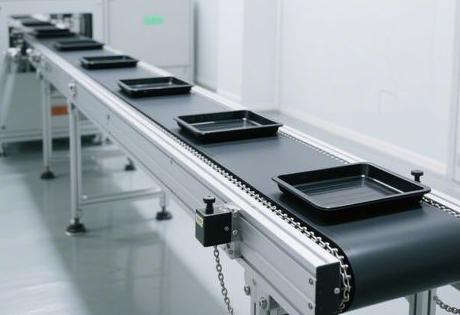
A: Triple protection strategy:
- Material upgradeCarbon steel chain + sealing cover, life expectancy is 200% higher than the standard model.
- Load-bearing correction: Load = Nominal value × e^(-0.03 × humidity %) (e.g. 300kg chain at 70% humidity with an actual limit of 240kg)
- Electronic control protection: IP54 rated control cabinet + earth leakage switch response <0.1 sec.
Q3: What signals indicate that the system needs urgent service?
A: Three major danger signs:
- Workpiece jitter >±0.3mm(Electronic patch defect rate soars threefold)
- Average monthly tensioning adjustment > 2 times(Indicates track deformation or chain link wear)
- Bearing temperature continuously >85°C(doubles the risk of lubrication failure)
Future Evolution: The Integration of Carbon Fibre and Adaptive Systems
Carbon Fibre Rollerof laboratory data revealing new directions:
- Reduced weight 68%, growth rate ratio exceeds 4.2 times limit
- Noise reduced from 82dB to 71dB (at 3.5x speed)
Current bottleneck is cost (7 times that of steel parts), but 2026Composite material injection moulding processThe cost is expected to be compressed to 2x after mass production.
Exclusive Prejudice: With the popularity of tension adaptive system (strain gauge + AI real-time regulation), high-end production lines will be realised:
- Energy consumption reduced by another 17% and chain life extended by 3.2 times.
- Dynamic speed response <0.2 seconds, completely eliminating the start-stop shock.


